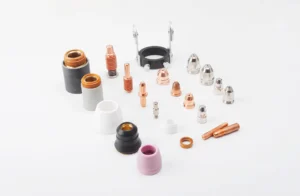Welding weave patterns play a crucial role in achieving optimal weld quality and strength. The selection and adjustment of the weave pattern can significantly influence the integrity and appearance of the weld joint. In this article, we will explore the key factors that should be considered when adjusting welding weave patterns to ensure successful welding outcomes.
Table of Contents
ToggleBase Material and Joint Configuration
The choice of welding weave pattern should be influenced by the type and properties of the base material being welded. Different materials have varying heat conductivity and melting points, which can affect the weld pool’s behavior. Additionally, the joint configuration, such as butt joint, fillet joint, or T-joint, should be considered when determining the appropriate weave pattern.
Welding Technique and Process
The welding technique and process being employed also impact the selection of the weaving pattern. For instance, in gas tungsten arc welding (GTAW), commonly known as TIG welding, the weave pattern is typically used to control heat input and ensure proper fusion. On the other hand, in gas metal arc welding (GMAW), or MIG welding, the weave pattern is often utilized to control the bead shape and penetration.
Welding Position
The welding position, whether it is flat, horizontal, vertical, or overhead, affects the stability and control of the welding pool. Certain weave patterns may be more suitable for specific positions to ensure proper weld penetration and deposition. Adjustments in the weave pattern should be made based on the welding position to maintain consistency and quality.
Welding Parameters
Critical welding parameters, such as voltage, current, travel speed, and wire feed rate, directly influence the choice and adjustment of weave patterns. Higher currents and slower travel speeds may require wider weave patterns to ensure adequate heat distribution and penetration. Conversely, lower currents and faster travel speeds may necessitate narrower weave patterns for better control and fusion.
Weld Joint Thickness and Welding Positioner
The thickness of the weld joint is an essential consideration when determining the weave pattern. Thicker joints may require wider weave patterns to achieve proper fusion throughout the joint thickness. Additionally, when welding on a positioner or rotating table, adjustments in the weave pattern may be necessary to compensate for the movement and maintain uniform weld deposition.
Welding Standards and Codes
Adherence to welding standards and codes, such as those provided by organizations like the American Welding Society (AWS), should be considered when adjusting weave patterns. These standards often provide guidelines and recommendations for welding weave patterns based on the specific application, material, and joint type.
Visual and Structural Requirements
The desired aesthetics and structural integrity of the weld joint also influence the selection of the weaving pattern. Some weave patterns, such as the oscillating weave or whip weave, can create visually appealing weld beads, while others, like the stringer bead, prioritize structural strength. The specific requirements of the application should guide the choice of weave pattern adjustment.
Adjusting welding weave patterns requires careful consideration of multiple factors to ensure successful welding outcomes. The choice of weave pattern should be based on the base material, joint configuration, welding technique, position, parameters, joint thickness, welding positioner, welding standards, and specific requirements of the application. By taking these factors into account and making appropriate adjustments, welders can achieve optimal weld quality, strength, and appearance in their projects.

